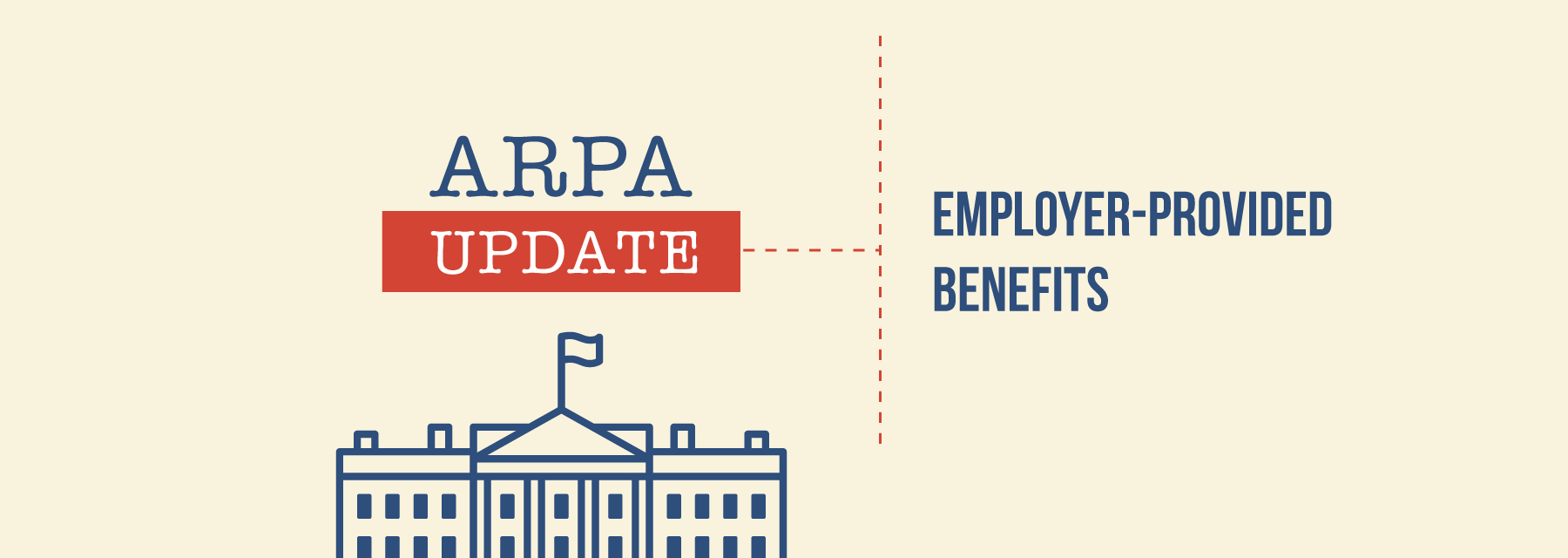On March 11, 2021, President Biden signed the American Rescue Plan Act of 2021 (ARPA) into law, which contains several provisions related to employee benefits. Below, we provide an overview of the main benefits-related provisions and how they impact employers.
1. 100% COBRA Subsidies from April 1, 2021 through September 30, 2021
ARPA includes a provision designed to provide up to 6 months of free COBRA coverage to employees and qualified beneficiaries (spouse and dependents) who lost (or lose) healthcare coverage due to an involuntary termination or reduction in hours. The bill will provide a 100% COBRA subsidy for “assistance eligible individuals” from April 1, 2021 through September 30, 2021. Assistance eligible individuals will be treated as having “fully paid” the applicable premiums and employers (or the plan or the insurer, in certain cases) will essentially “advance” the amounts due. Employers (or the applicable entity who was owed COBRA premiums) will then be reimbursed for unpaid premiums in the form of a refundable quarterly payroll tax credit, which may be advanced under the forthcoming rules set out by the Department of Treasury.
ARPA also provides a special 60-day election window for certain eligible individuals who were not covered under COBRA as of April 1, 2021 but are still within their original COBRA maximum coverage period. These individuals can elect COBRA coverage effective as of April 1, 2021 and until the end of their original coverage period.
Employer Impact: Employers will be obligated to provide COBRA coverage to eligible individuals and will then request reimbursement for unpaid premiums through quarterly payroll tax credits. ARPA also requires employers to provide a special 60-day election window for certain eligible individuals and also requires employers issue new COBRA notices. For a detailed breakdown on the COBRA subsidies and what steps employers can take to prepare, see our blog.
2. Dependent Care FSA (DC FSA) Limits Increased to $10,500
For the 2021 taxable year, ARPA increases the dependent care FSA limit from $5,000 to $10,500 (and from $2,500 to $5,250 for married individuals filing separately). DC FSA plans can be amended retroactively to include the higher maximum as long as the change is adopted by the last day of the plan year and the DC FSA is administered in accordance with the amendment.
Employer Impact: Employers can, but are not required to, increase the maximum pre-tax salary deduction for their DC FSA plans. Employers who decide to adopt the higher maximum should:
- Work with their DC FSA program vendor to administer the higher limit and amend plan documents by the end of the plan year.
- Consider allowing employees a window to increase their DC FSA elections (recently issued IRS relief permits employers to allow employees to make prospective mid-year DC FSA election changes, irrespective of whether they experience a permitted change event).
- Ensure your payroll team is prepared to update employee salary deductions accordingly.
- Communicate any limit increase or mid-year election window to employees, so they have the opportunity to take advantage of the new relief.
Note: There has been no guidance released on how the increase in DC FSA limits will impact non-discrimination testing (NDT). If an employer decides to adopt the higher maximum, it may mean that highly compensated employees (HCEs) may elect more than non-HCEs, causing the DC FSA to fail NDT. If employers are concerned about failing NDT, they may want to limit the maximum election limit for their HCEs.
The relief provided by the ARPA is in addition to the DC FSA relief provided under the Consolidated Appropriations Act of 2021 on mid-year changes, carryovers, grace periods, and eligible reimbursements.
3. FFCRA Tax Credits Expanded and Extended to September 30, 2021
ARPA extends and expands the tax credit for employers who voluntarily provide paid emergency sick and family leave previously required under the Families First Coronavirus Response Act (FFCRA). Though the mandate to provide paid FFCRA leave expired on December 31, 2020 (which applied to employers with under 500 U.S. employees), the Consolidated Appropriations Act of 2021 (CAA) extended the availability of employer tax credits to March 31, 2021. The ARPA further extends the tax credits to September 30, 2021. The ARPA tax credits apply to Medicare taxes (whereas the prior credits applied to Social Security taxes).
Further, after March 31, 2021, the ARPA makes the following changes:
- Sick Leave Limit Re-set: Beginning April 1, 2021, the 10-day limit on paid sick leave wages eligible for tax credits is re-set. This means employers can voluntarily provide an additional 10 days of FFCRA paid sick leave to employees who have already reached their 10-day limit and receive a tax credit for those additional 10 days.
- Increase in Family Leave Credit: The aggregate maximum credit for qualified paid family leave is increased to $12,000 (the maximum credit for paid sick leave wages remains unchanged).
- New Categories of Qualified Leave: In addition to the leave categories outlined in the FFCRA, employers can now receive a tax credit for additional categories of paid leave including:
- Obtaining the COVID-19 vaccine;
- Recovering from an injury, disability, illness, or condition related to such vaccination; or
- Seeking or waiting for results for a diagnostic test or medical diagnosis of COVID-19.
- New Non-discrimination Requirement: The tax credit will not be available to employers who discriminate in favor of highly compensated employees, full-time employees, or on the basis of employment tenure (meaning paid leave must be available to employees uniformly).
Employer Impact: Only employers with less than 500 U.S. employees that provide paid sick and/or family leave for the categories provided under the FFCRA and ARPA are eligible to take advantage of the tax credit. Though ARPA does not require employers to provide FFCRA leave, it is important to note that employers may still be required provide such leave under applicable state and local laws. Employers may want to take the following steps:
- Determine whether to provide, or to continue to provide, paid sick and family leave previously required under FFCRA.
- Determine whether to provide paid leave for employees obtaining the COVID-19 vaccine, recovering from a condition related to the COVID-19 vaccine, and/or waiting for results of a COVID-19 diagnosis.
- If leave is provided, determine the eligibility for leave (ensuring non-discrimination requirements are met), how long leave will be provided, income replacement provided, and any documentation requirements. Leave policies should be updated accordingly and new policies should be communicated to employees.
- If leave is provided, keep all records necessary to substantiate the leave and obtain tax credits. We previously reviewed recordkeeping requirements under the prior iteration of the FFCRA in our blog.
We anticipate additional guidance on the above provisions from the relevant government agencies in the coming weeks. We will provide further updates as new guidance is released.
Additional Resources
- American Rescue Plan Act of 2021
- Sequoia Foreword: 100% COBRA Subsidies Included in the Latest COVID Stimulus Bill
- Sequoia Foreword: Consolidated Appropriations Act of 2021
- Sequoia Foreword: Families First Coronavirus Response Act
- Sequoia Foreword: What Employers Need to Know About FFCRA Recordkeeping & Posting Requirements
- Sequoia Foreword: IRS Issues Mid-Year Election Change Relief & Clarifying Guidance on FSA/DC FSA Changes
Disclaimer: This content is intended for informational purposes only and should not be construed as legal, medical or tax advice. It provides general information and is not intended to encompass all compliance and legal obligations that may be applicable. This information and any questions as to your specific circumstances should be reviewed with your respective legal counsel and/or tax advisor as we do not provide legal or tax advice. Please note that this information may be subject to change based on legislative changes. © 2021 Sequoia Benefits & Insurance Services, LLC. All Rights Reserved




